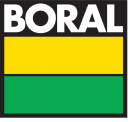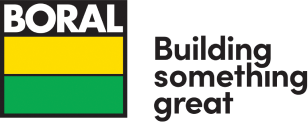Close integration with transport providers and across our own supply chain means we are able to deliver materials safely, both when and where we promise.
By road
On a typical day more than 3,000 heavy vehicles are travelling on Australian roads, efficiently delivering construction materials for Boral. Our integrated logistics team uses a combination of GPS, mobile connections, power take-off switches, and in-vehicle mobile data terminals to keep track of where each and every load is at any given time.
Dedicated project managers act as the single point of contact for customers, ensuring clear and consistent lines of communication for each project. With so many vehicles on the road, safety is paramount, and we are committed to ensuring the safe delivery of materials and eliminating or minimising risks to the safety of our drivers and the community.
To better enable our compliance with the Australian Heavy Vehicle National Law (HVNL) and Chain of Responsibility legislation, we have risk management plans and systems in place to provide a framework for the safety of our transport activities. These allow us to manage logistics in line with project safety requirements.
We identify risk across eight critical categories: speed, fatigue, mass, dimension, loading/load restraint, vehicle standards, contractor management, and driver on-road behaviour. We actively enforce training and induction. All drivers must be licensed for the class of vehicle they operate. They are trained and assessed as competent under our driver assessment processes as part of our driver induction process.
AII dedicated contractors working for Boral must have systems in their vehicles that can digitally capture fatigue and speed. We use telematics for various communication and productivity purposes and to monitor compliance with the HVNL, road rules and Boral policy.
By rail
Transport by rail enables us to transport large quantities of materials rapidly and efficiently. We have broad experience in working in live-rail environments and we transport cement and quarry products throughout the eastern states on a daily basis.
Our rail operations reduce transportation of materials into cities by road and help reduce traffic congestion. In New South Wales alone we transport some five million tonnes of quarry material each year.
Rail is also a key component of our end-to-end distribution of cement and lime from our manufacturing sites in NSW’s Southern Highlands. Cement is transported from Berrima to our depots in Wauchope, Coffs Harbour, Kooragang (Newcastle), Clyde (Sydney) and Dubbo in New South Wales. Hydrated lime is transported from our lime kiln at Marulan to Queensland.



